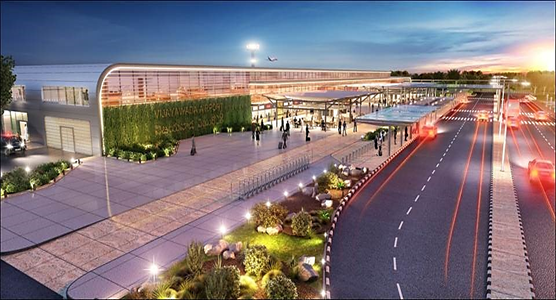GreenTree’s Strategy for Achieving Net-Zero Energy at Vijayawada Airport

By: Shivani Rani and Mijul Saxena
Context
Indian airways is a crucial component of modern connectivity, enabling the rapid movement of people and goods while also being a significant energy consumer. Airports are among the most energy-intensive infrastructures, requiring strategic interventions to enhance sustainability. To support India’s green building initiatives, GreenTree (GT) provided energy consultancy for the New Interim Terminal Building (Domestic) at Vijayawada Airport, ensuring its alignment with energy efficiency and environmental sustainability goals. Located in Krishna District, Andhra Pradesh, the terminal covers a site area of 70,150 m² with a built-up area of 12,999 m².
The project includes key sustainability strategies, such as sustainable site planning, significant water conservation efforts, optimized energy performance, renewable energy integration, and the estimated savings potential for each measure.
Key Sustainability Strategies and Findings

Purpose and Role of GreenTree (GT)
By implementing these strategies, the Vijayawada Airport terminal sets a benchmark for sustainable airport infrastructure, demonstrating the potential for energy-efficient and environmentally responsible design in India’s aviation sector. Through innovative design and energy optimization strategies, the project achieved a 42.67% reduction in energy consumption compared to the GRIHA benchmark, earning a 3-star GRIHA provisional rating upon its completion in 2018.
Key contributions included:
- Conducting a detailed energy assessment of the terminal building.
- Identifying energy-saving opportunities and evaluating their financial and environmental benefits.
GT also provided technical support to assess implementation feasibility, measure potential outcomes, and integrate renewable energy solutions to minimize the terminal’s carbon footprint.
Summary and Outcomes
The assessment identified a 42.67% reduction in energy consumption compared to the GRIHA benchmark, with an Energy Performance Index (EPI) of 257.99 kWh/m²/year. To enhance sustainability, a 15 kWp solar PV system has been integrated, contributing to renewable energy generation. In recognition of its energy-efficient design and environmental impact reduction, the project received a 3-star GRIHA provisional rating upon its completion in 2018.





